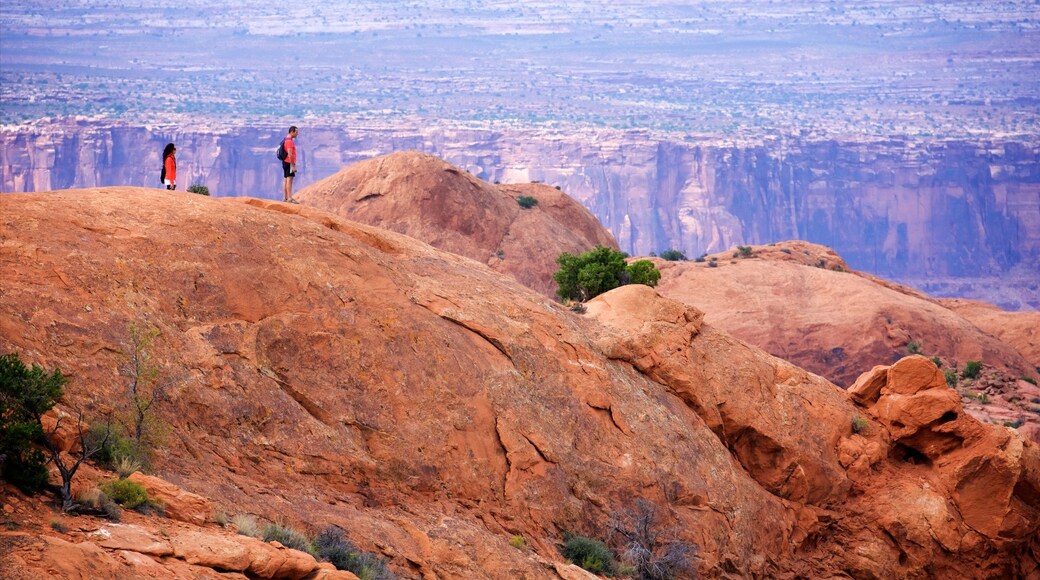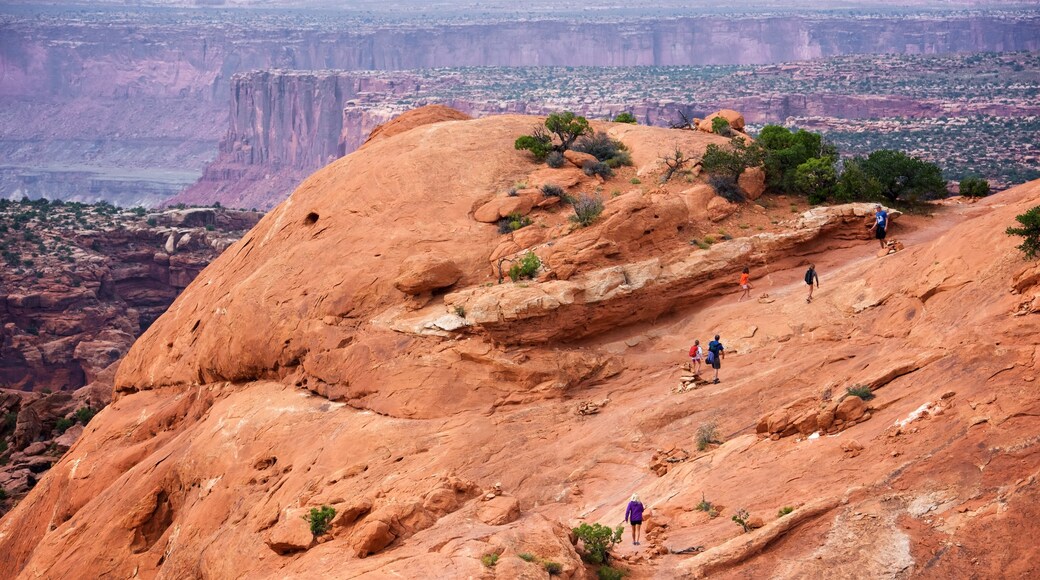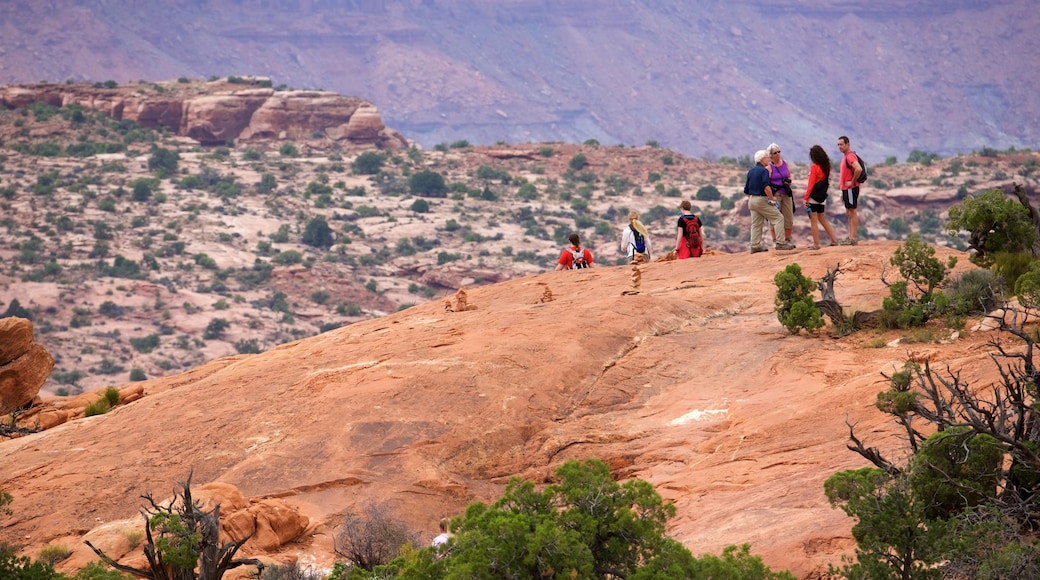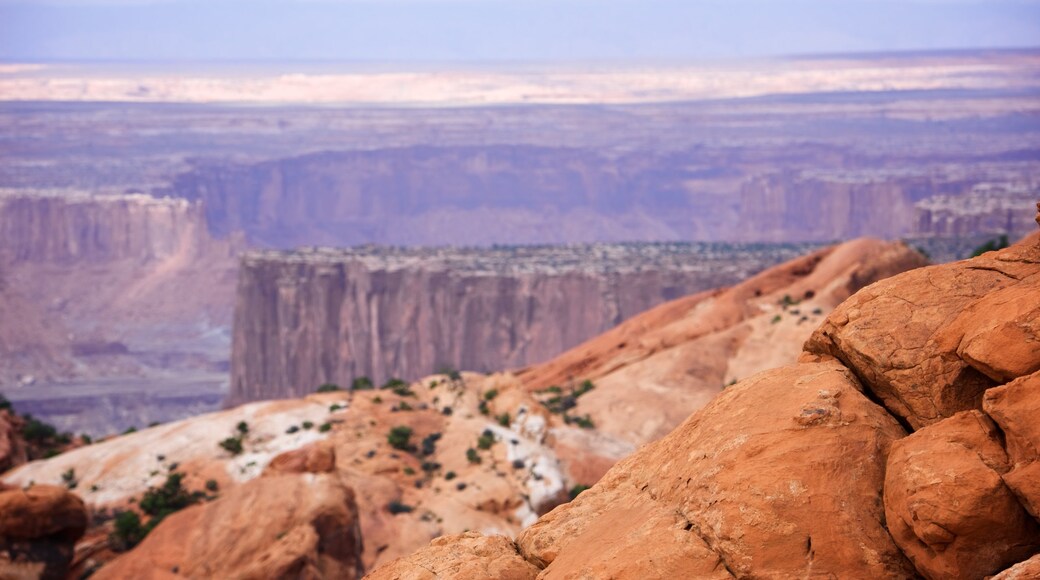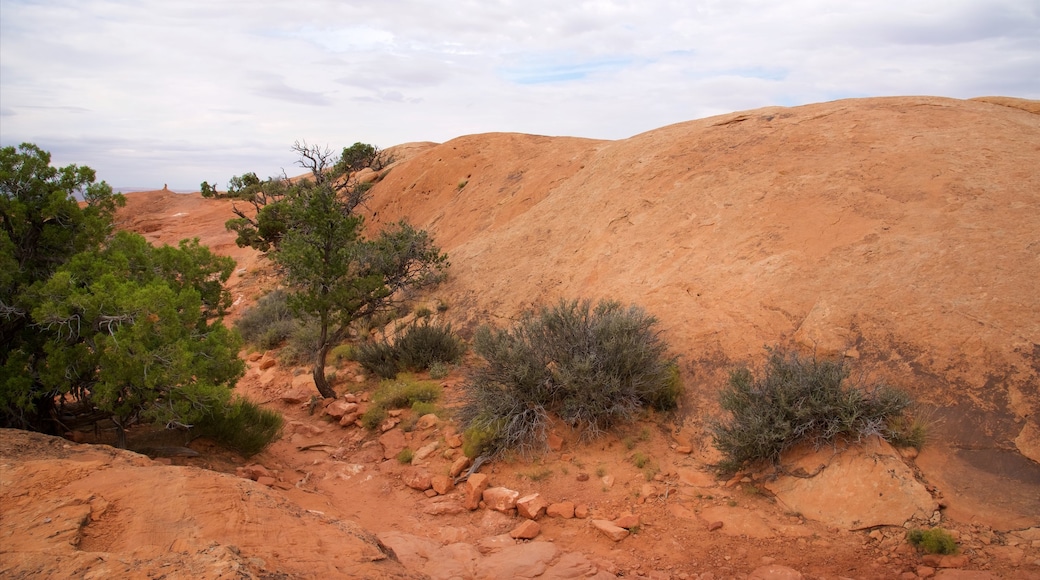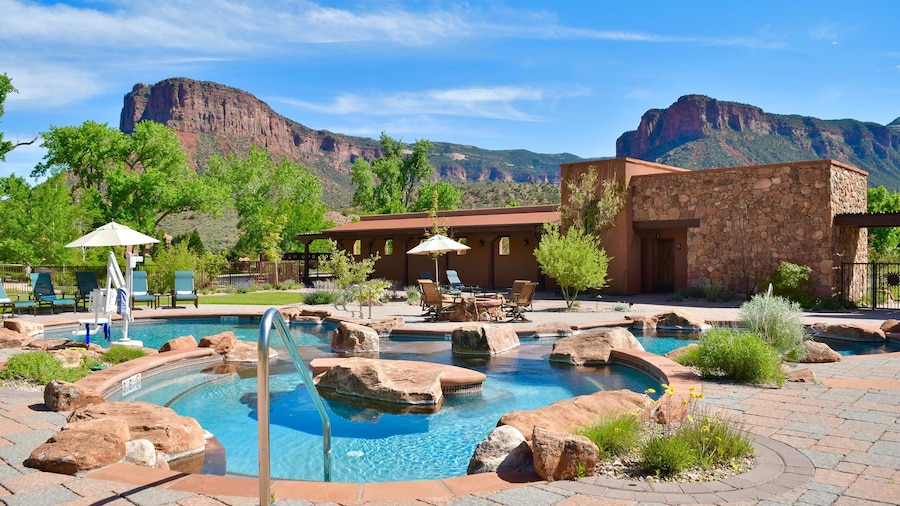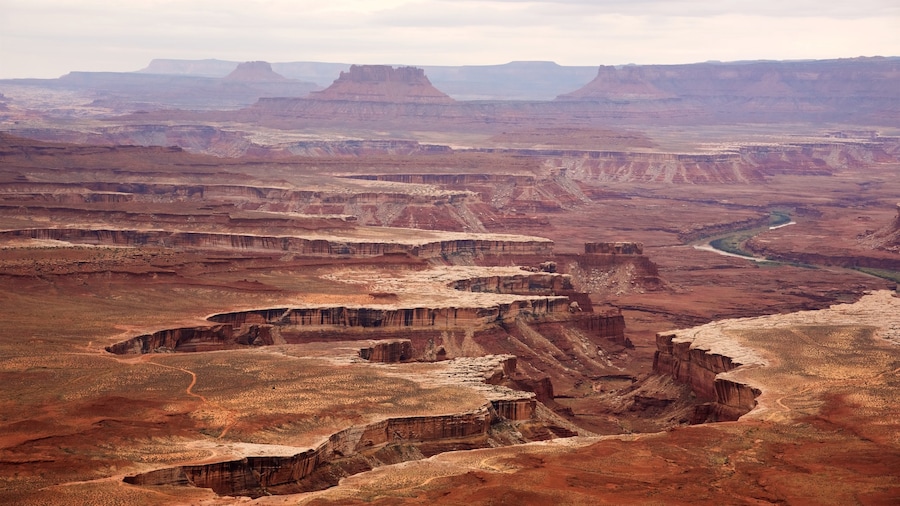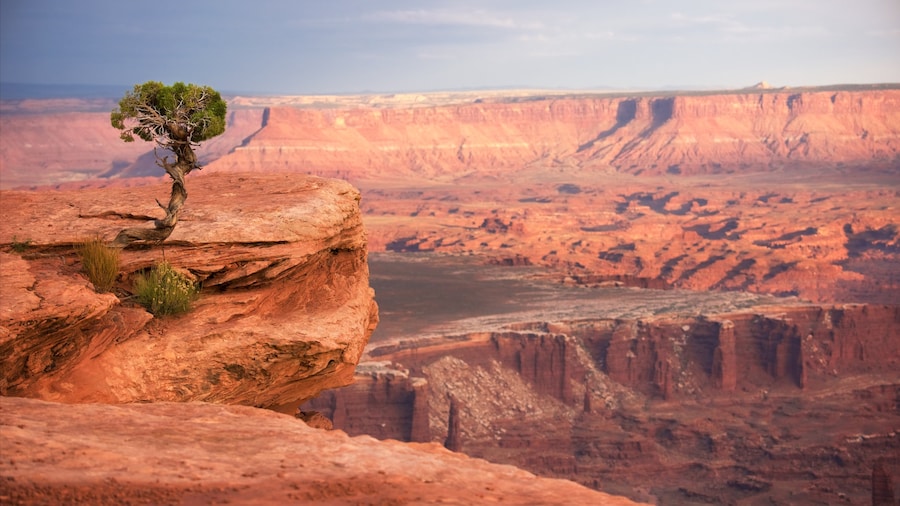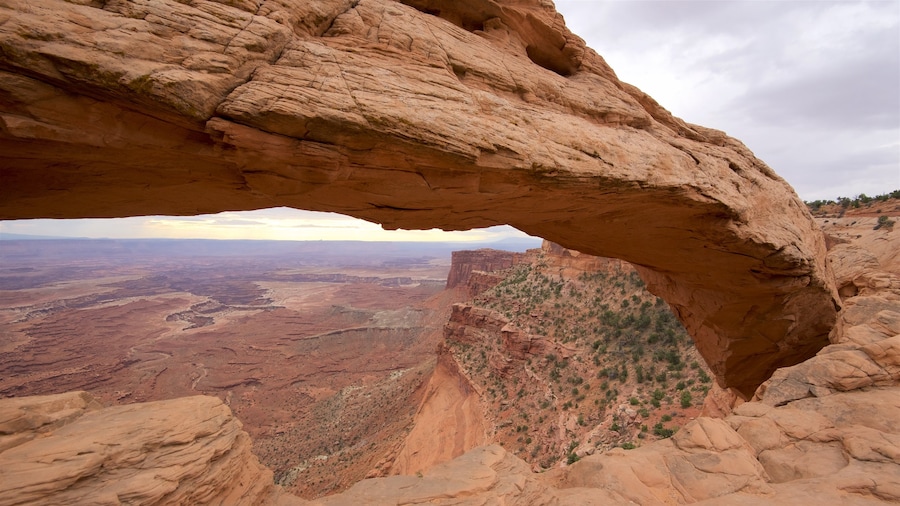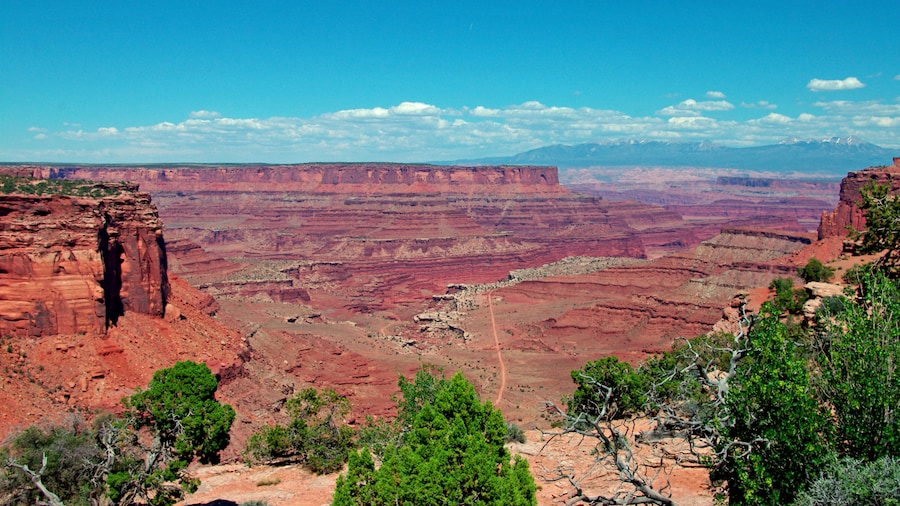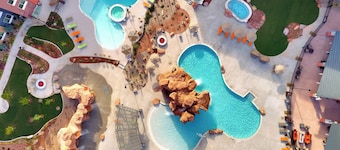Whether salt pressure or a meteorite created this crater, it is an unforgettable sight at the end of its namesake trail.
Upheaval Dome stands out as an exceptional crater in Canyonlands National Park. It is believed to have been created by a meteorite and extends across a circular area with a diameter of 3 miles (5 kilometers). On a visit to Upheaval Dome, walk around the edge of the crater and gaze down into the depression.
Imagine what the terrain would have looked like about 60 million years ago, right after the tumultuous impact of the meteorite. In the time that has passed since the supposed meteorite strike, most of the associated debris has been eroded. See how the rocks are now twisted and discolored, with a pronounced dome at the center of the crater.
Hike along the Upheaval Dome Trail, which runs for 1 mile (1.6 kilometers) and is of moderate difficulty, since it is fairly steep. Read some of the informative plaques at the end of the trail for further information about this natural formation.
You can continue the trail to reach a second observation point or take one of the other trails in the area, such as the simple Mesa Arch path or the strenuous Lathrop Trail.
Note that a meteorite impact is not the only theory about the creation of the region. The salt dome theory is also plausible, if a little less dramatic, suggesting millions of years of pressure and the evaporation of ancient seas caused the crater. Chat with park rangers at the nearby Island in the Sky Visitor Center about the mystery surrounding the origins of the crater and its dome.
Find Upheaval Dome in the Island in the Sky district of Canyonlands National Park. It lies in the southeastern part of Utah, a 40-mile (64-kilometer) drive west of Moab. Travel here by car in less than 1 hour. There is a fee to enter the national park.
Make your way around the region for other outdoor public places such as Arches National Park, Fishlake National Forest, the Glen Canyon National Recreation Area and the Grand Staircase-Escalante National Monument.
